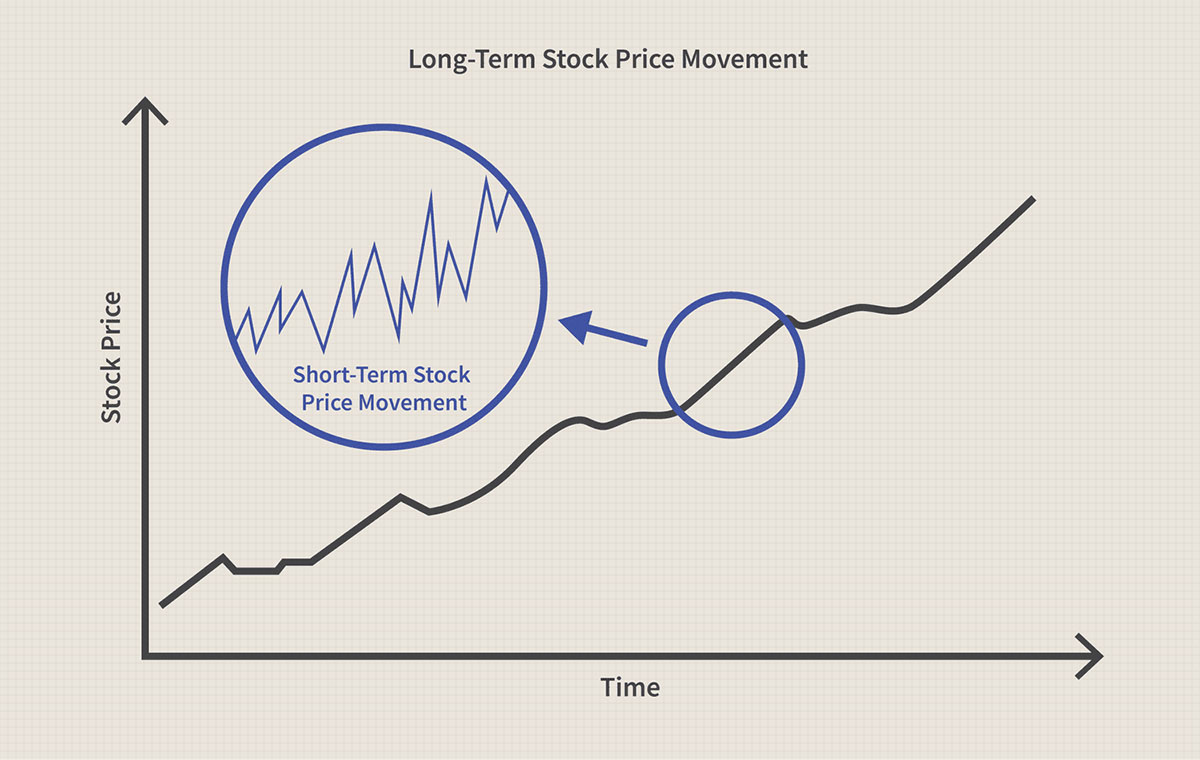

Finance
How To Win The Stock Market Game
Published: October 20, 2023
Learn the strategies and tips on how to dominate the stock market game and increase your chances of winning. Unlock the secrets of finance and make smart investment decisions today!
(Many of the links in this article redirect to a specific reviewed product. Your purchase of these products through affiliate links helps to generate commission for LiveWell, at no extra cost. Learn more)
Table of Contents
Introduction
Welcome to the world of the stock market, where fortunes can be made and lost in the blink of an eye. Investing in the stock market can be a thrilling and rewarding experience, but it can also be intimidating and overwhelming for those who are new to the game. However, with the right knowledge and strategies, anyone can strive to become a successful investor.
The stock market is a marketplace where individuals and institutions buy and sell shares of publicly traded companies. It is a vital component of the global economy, providing businesses with capital and investors with opportunities for wealth creation. While the stock market can offer substantial returns, it also carries inherent risks. Therefore, it is crucial to approach investing in the stock market with a well-thought-out plan.
In this article, we will explore some key strategies for navigating the stock market effectively, with the ultimate goal of enhancing your chances of success. We will delve into topics such as understanding the stock market, setting financial goals, conducting research, developing an investment strategy, diversifying your portfolio, monitoring and analyzing market trends, managing risk, controlling emotions, and reviewing and adjusting your strategy over time.
Whether you are a beginner or an experienced investor, these strategies will provide you with valuable insights and tools to help you win the stock market game. So, let’s dive in and discover how to make informed investment decisions and harness the power of the stock market to achieve your financial goals.
Understanding the Stock Market
Before diving into the world of stock market investing, it is crucial to have a solid understanding of how it functions. The stock market is essentially a marketplace where buyers and sellers trade shares of publicly traded companies. These companies list their shares on various exchanges, such as the New York Stock Exchange (NYSE) or the NASDAQ, allowing investors to buy and sell these shares.
Stocks, also known as equities, represent ownership in a company. When you purchase shares of a company, you become a shareholder and have a claim on its assets and profits. The value of those shares fluctuates based on various factors, such as company performance, economic conditions, industry trends, and investor sentiment.
As an investor, there are different types of stocks you can invest in, including common stocks and preferred stocks. Common stocks entitle you to voting rights and a share of the company’s profits through dividends. Preferred stocks, on the other hand, typically do not provide voting rights but offer a fixed dividend payment.
The stock market provides investors with the opportunity to make money in two primary ways: capital appreciation and dividends. Capital appreciation refers to the increase in the value of a stock over time. If you buy a stock at a certain price and sell it at a higher price, you can make a profit. Dividends, on the other hand, are payments made by companies to shareholders as a portion of their profits. Not all stocks offer dividends, and the amount of dividends can vary from company to company.
It is essential to recognize that investing in the stock market comes with risks. Stock prices can be volatile, influenced by many factors such as economic indicators, company news, geopolitical events, and market sentiment. Prices can fluctuate daily, and in some cases, quite dramatically. Therefore, it is essential to approach stock market investing with a long-term perspective and be prepared for market fluctuations along the way.
Once you have a solid understanding of how the stock market works, you will be better equipped to make informed investment decisions. In the next section, we will discuss how establishing clear financial goals can guide your investment strategy and help you stay focused on your objectives.
Setting Financial Goals
Setting clear financial goals is a crucial step in the journey towards stock market success. Without well-defined goals, it becomes challenging to make strategic investment decisions and measure your progress. By establishing specific, measurable, achievable, realistic, and time-bound (SMART) goals, you can stay focused and motivated throughout your investing journey.
Start by reflecting on your personal financial aspirations. What do you hope to achieve through your investments? Are you aiming for long-term wealth accumulation or seeking to generate income in the short term? It’s essential to align your investment goals with your overall financial objectives, whether it’s saving for retirement, purchasing a home, funding your children’s education, or achieving financial independence.
Once you have identified your financial goals, quantify them. Determine how much money you need to achieve each goal and by when. Setting specific targets will provide you with a clear benchmark and enable you to track your progress. It’s essential to set realistic goals that consider factors such as your income, expenses, risk tolerance, and investment time horizon.
Additionally, it’s important to prioritize your goals. You may have multiple financial objectives, but it’s unlikely that you will be able to achieve them all simultaneously. Identify which goals are most important and require immediate attention. This will help you allocate your resources and create a focused investment strategy.
Regularly reassess and adjust your financial goals as circumstances change. Life is full of surprises and unexpected events that may necessitate modifications to your investment plans. By regularly reviewing your goals and making necessary adjustments, you can ensure that your portfolio remains aligned with your evolving needs and aspirations.
Remember, setting financial goals is not a one-time activity, but an ongoing process. It is essential to have a clear vision of what you want to accomplish and regularly evaluate your progress. This will help keep you motivated and accountable, allowing you to make informed investment decisions based on your defined objectives.
With well-established financial goals in place, you are now ready to proceed to the next crucial step in your stock market journey: conducting thorough research. In the following section, we will delve into the importance of research in making informed investment decisions.
Conducting Research
Conducting thorough research is a fundamental aspect of successful stock market investing. It involves gathering and analyzing information to make well-informed investment decisions. Research allows you to understand the companies you are investing in, assess their financial health, evaluate their competitive position, and gauge their growth prospects. Here are some key steps to consider when conducting research:
1. Company Analysis: Begin by exploring the company’s financial statements, including its income statement, balance sheet, and cash flow statement. These documents provide valuable insights into the financial health of the company, its revenue sources, expenses, and cash flow generation. Additionally, delve into the company’s annual reports, conference call transcripts, and investor presentations to gain a deeper understanding of its business model, strategy, and future plans.
2. Industry Analysis: Examine the broader industry in which the company operates. Understand the market dynamics, trends, and competition within the industry. Consider factors such as market size, growth potential, regulatory environment, and technological advancements. This analysis will help you assess the company’s position within the industry and its ability to navigate market challenges and opportunities.
3. Competitive Analysis: Evaluate the company’s competitors. Compare their financial performance, market share, product offerings, and competitive advantages. Understanding the competitive landscape will help you assess the company’s ability to stay ahead of its rivals and maintain a sustainable competitive edge.
4. Management Analysis: Assess the company’s management team and their track record. Look for experienced and capable leaders who have a proven ability to execute the company’s strategy and deliver results. Consider their expertise, previous successes, and alignment with shareholder interests.
5. Economic Analysis: Stay informed about the broader economic environment. Understand how economic factors such as interest rates, inflation, and GDP growth can impact the company’s performance. Monitor economic indicators and trends that are relevant to the company’s operations and market segment.
Remember, conducting research requires time and effort. Seek information from reliable sources such as reputable financial news outlets, analyst reports, and official company filings. Stay up to date with the latest developments and news about the companies you are interested in.
By conducting thorough research, you can make more informed investment decisions. Research helps you assess the intrinsic value of a company and determine whether a stock is currently overvalued or undervalued. It provides a solid foundation for developing an investment strategy tailored to your financial goals and risk tolerance.
In the next section, we will discuss how to develop an effective investment strategy based on the research and analysis conducted.
Developing an Investment Strategy
Developing a well-thought-out investment strategy is essential for navigating the stock market and achieving your financial goals. An investment strategy serves as a roadmap that guides your decision-making process and helps you stay focused amidst market turbulence. Here are key steps to consider when developing your investment strategy:
1. Risk Assessment: Begin by assessing your risk tolerance. Determine how much risk you are willing and able to take in your investment portfolio. This will help you decide on an appropriate asset allocation mix and investment approach. Conservative investors may prefer a more balanced and diversified approach, while aggressive investors may be comfortable with higher-risk investments.
2. Asset Allocation: Decide on the distribution of your investments among various asset classes, such as stocks, bonds, and cash. Asset allocation is crucial as it helps manage risk and optimize returns. Consider your time horizon, financial goals, and risk tolerance when determining the ideal asset allocation mix. A balanced and diversified portfolio can help mitigate the impact of market fluctuations.
3. Investment Style: Determine your preferred investment style. Are you a value investor who seeks undervalued stocks? Or do you lean towards growth investing, targeting companies with high growth potential? Perhaps you prefer a blend of both value and growth. Understanding your investing style will help you identify suitable investment opportunities and align them with your strategy.
4. Long-Term Perspective: Embrace a long-term perspective in your investment strategy. The stock market is subject to short-term volatility, but history has shown that it tends to rise over the long run. By staying invested for the long term, you can potentially benefit from market upswings and compound your returns.
5. Regular Portfolio Rebalancing: Periodically review and rebalance your portfolio to maintain your desired asset allocation. As market conditions evolve, certain investments may outperform or underperform. Rebalancing ensures that your portfolio remains in line with your target allocation and helps you buy low and sell high.
6. Investment Tools: Explore a range of investment tools available to assist you in implementing your strategy. This may include individual stocks, exchange-traded funds (ETFs), mutual funds, or robo-advisors. Consider the pros and cons of each tool and choose the ones that align with your investment strategy and objectives.
7. Plan for Diversification: Diversification is vital in reducing risk. Spread your investments across different sectors, industries, and geographic regions. By diversifying your portfolio, you can potentially cushion the impact of any single investment’s performance and enhance your overall risk-adjusted returns.
8. Patience and Discipline: Lastly, maintain patience and discipline in executing your investment strategy. Avoid emotional decision-making triggered by short-term market fluctuations. Stick to your investment plan and resist the urge to make impulsive changes.
Remember that an investment strategy is not set in stone. You may need to make adjustments over time based on changes in market conditions, personal circumstances, and financial goals. Regularly review and refine your strategy to ensure its alignment with your objectives.
With a well-developed investment strategy, you are now equipped to move forward and build a diversified portfolio. In the next section, we will explore the importance of diversification and how it can help manage risk and optimize returns.
Diversifying Your Portfolio
Diversification is a key principle of successful investing that involves spreading your investments across different asset classes, industries, and geographic regions. By diversifying your portfolio, you can help manage risk and potentially enhance your overall returns. Here are some important considerations when it comes to portfolio diversification:
Reducing Investment Risk: Diversification helps mitigate the impact of any individual investment’s performance on your overall portfolio. By spreading your investments, you reduce the exposure to the risks associated with a single asset. If one investment underperforms, others may offset the losses, minimizing the overall impact on your portfolio.
Asset Class Diversification: Invest in a mix of different asset classes, such as stocks, bonds, cash, and potentially alternative investments. Different asset classes have varying levels of risk and returns. When one asset class is experiencing a downturn, another may be performing well. This diversification across asset classes can help smooth out your portfolio’s performance over time.
Sector and Industry Diversification: Allocate your investments across various sectors and industries. Different sectors may have different performance cycles, and by spreading your investments across multiple sectors, you can reduce the impact of downturns in any specific sector. This approach allows you to capture opportunities in sectors that are experiencing growth while balancing exposure to sectors facing challenges.
Geographic Diversification: Consider investing in companies and assets from different geographic regions. Economic conditions, political factors, and market trends can vary across countries. By diversifying geographically, you reduce the risk of being overly exposed to the performance of a particular region. This approach allows you to benefit from global growth opportunities and minimize the impact of regional market fluctuations.
Number of Investments: While it is essential to diversify, it is also important to strike a balance. Holding too few investments may expose your portfolio to a higher level of risk. Conversely, having too many investments may dilute the potential impact of successful picks. Aim for a diversified portfolio that includes an adequate number of investments, considering your risk tolerance and time constraints for managing your investments effectively.
Regular Portfolio Reassessment: Regularly review your portfolio to ensure it remains diversified. Over time, the performance of different assets can result in an imbalanced portfolio. This can be addressed by rebalancing your holdings to realign with your desired asset allocation and diversification strategy. Rebalancing involves selling some investments that have become overweight and purchasing assets that have become underweight.
Remember that while diversification can help manage risk, it does not guarantee against losses or assure profits. It is essential to conduct thorough research and analysis when making investment decisions, even within a diversified portfolio.
By diversifying your portfolio, you can potentially reduce the impact of market volatility, optimize returns, and achieve a more balanced risk profile. In the next section, we will explore the importance of monitoring and analyzing market trends to make informed investment decisions.
Monitoring and Analyzing Market Trends
Monitoring and analyzing market trends is a vital part of successful stock market investing. By staying informed about market movements and trends, you can make informed investment decisions and adjust your portfolio accordingly. Here are key considerations when it comes to monitoring and analyzing market trends:
Stay Updated: Regularly keep up with financial news, market updates, and economic indicators. By staying informed, you can be aware of major events, news, and trends that may impact the financial markets. Utilize reliable sources of information such as financial news platforms, market research reports, and reputable financial websites.
Technical Analysis: Utilize technical analysis tools to analyze price patterns, trends, and market indicators. Technical analysis involves studying historical price and volume data to predict future price movements. Use chart patterns, moving averages, and oscillators to identify potential buying or selling opportunities.
Fundamental Analysis: Conduct fundamental analysis to evaluate the intrinsic value of a company or an investment. This involves assessing financial statements, earnings reports, and other relevant information to determine the company’s financial health, valuation, and growth potential. Consider factors such as revenue growth, profitability, market position, and competitive advantage.
Watch Out for Industry Trends: Keep an eye on industry-specific trends and developments. Understand the dynamics and challenges facing the sectors in which you are invested. Industry trends such as technological advancements, regulatory changes, and shifts in consumer behavior can significantly impact individual companies and their stock prices.
Monitor Market Sentiment: Pay attention to market sentiment and investor behavior. Sentiment indicators, such as the Volatility Index (VIX) or investor sentiment surveys, provide insights into the overall mood of the market. This information can help you gauge market optimism or pessimism, which may impact stock prices.
Track Economic Indicators: Monitor key economic indicators such as GDP growth, inflation rates, interest rates, and employment data. Economic indicators provide insights into the health and direction of the overall economy. By understanding the broader economic context, you can better anticipate how it may impact specific industries and companies.
Utilize Analytical Tools: Take advantage of various analytical tools and platforms to enhance your market analysis. From stock screeners to financial modeling software, these tools can help you filter and analyze large amounts of data, identify investment opportunities, and track the performance of your portfolio.
Regularly Review Your Portfolio: Continuously monitor the performance of your investments to ensure they align with your investment strategy and goals. Regularly assess whether your individual stocks or funds are meeting expectations and consider if any adjustments or rebalancing is necessary. Reassess the investment thesis of each holding based on new information or changing market conditions.
By diligently monitoring and analyzing market trends, you can make informed decisions, identify emerging opportunities, and respond to changing market conditions. However, be cautious not to let short-term market fluctuations drive your investment decisions. Always maintain a long-term perspective and consider the fundamental strength of your investments.
In the next section, we will explore the importance of managing risk in stock market investing.
Managing Risk
Risk is an inherent part of stock market investing, but managing risk effectively is crucial for long-term success. By implementing risk management strategies, you can protect your portfolio from significant losses and navigate unpredictable market conditions. Here are key considerations when it comes to managing risk:
Diversification: As discussed earlier, diversifying your portfolio across different asset classes, sectors, and geographic regions can help reduce the impact of any individual investment’s poor performance. Diversification spreads risk and can potentially enhance overall portfolio stability.
Setting Stop Loss Orders: Consider setting stop loss orders for your investments. A stop loss order is a predetermined price at which you automatically sell a stock to limit potential losses. This strategy helps protect your portfolio by ensuring that losses are contained within predetermined limits.
Adopting Position Sizing: Implement position sizing techniques to determine how much of your portfolio to allocate to each investment. By limiting the size of individual positions, you can reduce the impact of any single investment’s poor performance on your overall portfolio.
Use of Stop-Limit Orders: Utilize stop-limit orders, which allow you to automatically place a limit order to sell a stock if it reaches a specified price. This strategy helps protect against sudden market fluctuations by ensuring you sell at a predetermined price or better.
Regular Portfolio Rebalancing: Rebalance your portfolio periodically to maintain your desired asset allocation and risk profile. This involves selling investments that have outperformed their target allocation and adding to positions that have underperformed. Regular rebalancing helps you to sell high and buy low, reducing the risk of overexposure to specific investments.
Contingency Planning: Develop contingency plans for various market scenarios. Consider the potential impact of economic downturns or industry-specific challenges on your portfolio. By having contingency plans in place, you are better prepared to make informed decisions during times of market volatility or unexpected events.
Stress Testing Your Portfolio: Conduct stress tests to assess how your portfolio would perform under adverse market conditions. Simulate scenarios such as market crashes or economic recessions, and evaluate the potential impact on your investments. This exercise helps identify vulnerabilities in your portfolio and allows you to make necessary adjustments to mitigate risks.
Monitoring and Adjusting: Stay vigilant and continuously monitor the performance of your investments. Regularly review and adjust your portfolio based on changing market conditions or new information. This proactive approach ensures that your investments are aligned with your risk tolerance and investment objectives.
Recognize Emotional Biases: Be mindful of emotional biases that can cloud your judgment, such as fear or greed. Emotional decision-making can lead to impulsive investment choices that may not align with your long-term objectives. Take a rational and disciplined approach when evaluating investment opportunities.
Remember, while risk management strategies can help protect your portfolio, they cannot completely eliminate the possibility of losses. It is important to understand that investing in the stock market involves inherent risks, and past performance is no guarantee of future results.
In the next section, we will explore the role of emotions in investing and how to control them for better decision-making.
Controlling Emotions
Controlling emotions is crucial when it comes to successful stock market investing. Emotions such as fear and greed can cloud judgment and lead to impulsive and irrational decision-making. By learning to control your emotions, you can make objective investment decisions and avoid costly mistakes. Here are key strategies for controlling emotions:
Develop a Long-Term Perspective: Adopt a long-term perspective when it comes to investing. Understand that the stock market goes through ups and downs, and short-term fluctuations are part of the journey. By focusing on long-term goals and avoiding reactionary moves based on short-term market movements, you can maintain a more rational mindset.
Set Clear Investment Objectives: Establish clear investment objectives based on your financial goals and risk tolerance. When you have defined objectives, it becomes easier to stay focused and not get swayed by short-term market noise. Remember why you invested in the first place and maintain discipline in aligning your decisions with your objectives.
Stick to Your Investment Plan: Once you have developed an investment plan, stick to it. Avoid constantly shifting strategies based on market volatility or short-term market trends. Market timing is notoriously difficult, and trying to beat the market based on emotions often leads to poor results. Trust in your plan and its underlying research.
Practice Patience: Patience is a virtue in investing. Avoid the temptation to make frequent trades or chase after short-term gains. Instead, allow your investments time to grow and compound. Remember that successful investing is a marathon, not a sprint.
Ignore Daily Market Noise: Tune out the daily market noise and focus on the bigger picture. News headlines and market commentary can be distracting and evoke emotional responses. Instead, focus on the underlying fundamentals of your investments and long-term trends.
Avoid Herd Mentality: Do not blindly follow the crowd. When everyone is rushing to buy or sell a particular stock, it’s often a sign of irrational behavior rather than sound investment rationale. Conduct your own research and make investment decisions based on your analysis and objectives.
Utilize Stop-Loss Orders: Implement stop-loss orders to protect against excessive losses and manage risk. By setting predetermined exit points for your investments, you can avoid making emotional decisions during periods of market volatility.
Learn from Mistakes: Accept that mistakes and losses are part of the investing process. Instead of dwelling on them or letting them dictate future decisions, focus on learning from them. Analyze what went wrong, identify lessons to be learned, and adjust your strategy accordingly.
Seek Professional Advice When Needed: If you feel overwhelmed by emotions or lack confidence in your decision-making, consider seeking advice from a qualified financial professional. They can provide objective guidance based on their expertise and help you navigate through challenging market conditions.
Controlling emotions is an ongoing process that requires self-awareness, discipline, and a commitment to your long-term investment goals. By following these strategies, you can avoid emotional biases and make rational decisions based on objective analysis.
In the final section, we will discuss the importance of reviewing and adjusting your investment strategy over time.
Reviewing and Adjusting Your Strategy
Regularly reviewing and adjusting your investment strategy is a critical aspect of successful stock market investing. The financial landscape and market conditions can change over time, and it is important to adapt your strategy to ensure its continued alignment with your goals. Here are key considerations when it comes to reviewing and adjusting your strategy:
Periodic Portfolio Assessment: Conduct a periodic assessment of your investment portfolio. Evaluate the performance of individual holdings and the overall portfolio. Identify investments that have consistently underperformed or no longer align with your objectives. Consider whether it is appropriate to adjust or eliminate those investments.
Assess Changes in Market Conditions: Stay abreast of changes in market conditions, including economic trends, industry shifts, and geopolitical events. Examine how these changes may impact your investments and overall strategy. Adjust your approach accordingly to capitalize on emerging opportunities or mitigate potential risks.
Monitor Investment Performance: Continuously monitor the performance of your investments. Regularly evaluate how individual stocks, funds, or asset classes are performing. If certain investments consistently underperform or fail to meet expectations, it may be necessary to reassess and make changes to your portfolio.
Rebalance Your Portfolio: Rebalance your portfolio periodically to maintain your desired asset allocation. Changes in market prices and the relative performance of different assets can lead to imbalances in your portfolio. Rebalancing involves selling some investments that have become overweight and reallocating the proceeds into positions that have become underweight.
Consider New Opportunities: Keep an eye out for new investment opportunities that may align with your strategy. This may involve researching and analyzing new companies or sectors that show potential for growth. Stay open to adjusting your portfolio to include these opportunities, while ensuring they fit within your risk tolerance and overall investment approach.
Review and Adjust Financial Goals: Periodically review your financial goals and assess whether they need to be adjusted. Life circumstances, economic conditions, and personal aspirations can change over time, warranting a reassessment of your investment objectives. Ensure that your goals remain relevant, achievable, and aligned with your overall financial plan.
Learn from Experience: Reflect on past investment decisions and experiences. Analyze successes and failures, identify patterns, and draw valuable lessons. Utilize these learnings to refine and improve your investment strategy. Continual learning and adjustment are key to evolving as an investor.
Seek Professional Advice: Consider seeking advice from a qualified financial professional. They can provide expert guidance based on their industry knowledge and experience. A financial advisor can review your portfolio, help you assess your investment strategy, and provide recommendations tailored to your specific circumstances and goals.
Remember, investing is a dynamic process, and your strategy should adapt to changing market conditions and personal circumstances. Regularly reviewing and adjusting your investment strategy will help you maintain alignment with your objectives, optimize portfolio performance, and increase the likelihood of achieving your financial goals.
Conclusion
Investing in the stock market can be both exciting and rewarding, but it requires knowledge, research, and a well-executed strategy. By understanding the workings of the stock market and setting clear financial goals, you lay a solid foundation for success. Conducting thorough research allows you to make informed investment decisions and identify opportunities for growth.
Developing an investment strategy that aligns with your risk tolerance is crucial. Diversifying your portfolio across different asset classes, industries, and geographic regions helps manage risk and optimize returns. Regularly monitoring and analyzing market trends enables you to adjust your strategy based on emerging opportunities and changing market conditions.
Managing risk and controlling emotions are essential for long-term investment success. By implementing risk management strategies and avoiding emotional biases, you can make rational decisions and stay focused on your long-term goals. Finally, regularly reviewing and adjusting your investment strategy ensures its continued alignment with your objectives and enables you to capitalize on market opportunities.
Remember that investing in the stock market carries inherent risks, and past performance is no guarantee of future results. It is important to conduct thorough research, stay informed, and seek professional advice when needed. By following these principles and staying committed to your investment strategy, you can strive to win at the stock market game and achieve your financial goals.
So, roll up your sleeves, embrace the challenges, and embark on your journey towards financial success through stock market investing. With careful planning, disciplined execution, and a focus on long-term growth, you have the potential to reap the rewards of your wise investment decisions.














